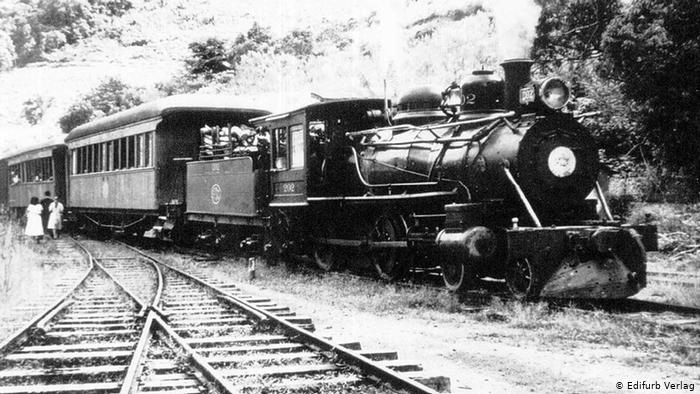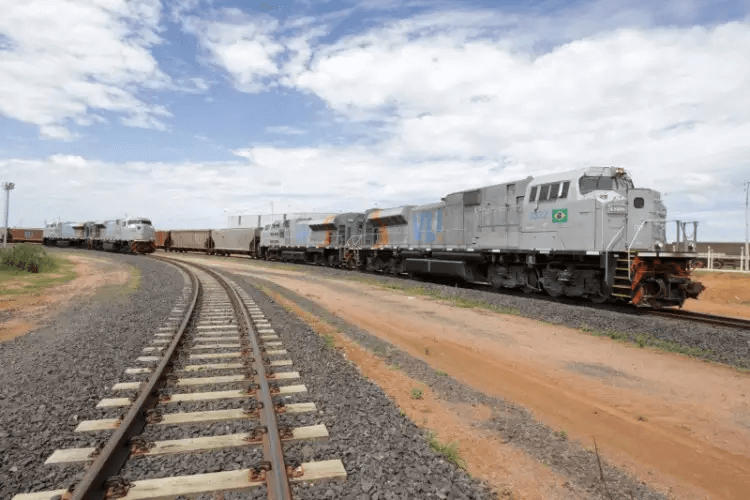
History of railways in Brazil
The history of railways in Brazil is very rich and driven by several twists and turns. Since the implementation of the first railway in the country, this sector has undergone numerous changes, both positive and growth and development, to structural problems that led to abandonment. But recently, investments have resumed.
To start our discussion effectively, we need to tell you about the first railroads built. Brazilian railway construction started in the nineteenth century, when the country was still an imperial and slave-holding nation, and did not even give evidence of the government model of today.
Therefore, the history of railroads in Brazil begins with the construction of the first railroad, the Estrada de Ferro de Mauá, inaugurated in 1854 by the time emperor Dom Pedro II. Despite the inauguration being made by the emperor, the idealization of the project and the execution of the work were carried out by Irineu Evangelista de Souza, future Barão de Mauá.
The work was built in the state of Rio de Janeiro,the capital of Brazil at the time. The Mauá Railway had a length of 14.5 km, much less than the mileage of the current railways. The main objective of the road was to supply the ports of Rio with the main item of extraction of the economy at the time, gold. The line left the city of Rio de Janeiro and reached Petrópolis, both cities located in the state of Rio.
From the creation of this first railway line, the history of railways in Brazil began to conquer new areas. New investments started to be made in this sector, since the governments realized that this was a development trend worldwide and, therefore, it was necessary that Brazil also adapted itself. For this reason, we will now address the main railways that were being built, we will talk about historical landmarks in the sector and how the railway lines are in the country today.
Content Index
Subsequent processes

On the website of the National Association of Railway Transporters (ANTF), the main Brazilian association that studies and presents data about Brazilian railways, we can find a chronological line that marks the main events about the history of railways in Brazil.
After the construction of the first railway in Brazil, processes in the railway sectors developed more and more. Investments started to be encouraged by the current government, which even sought foreign capital to finance the projects. The second Brazilian railroad, Recife and São Francisco Railway Company, set up in the state of Pernambuco, was an example of a structure benefited from investments from English entrepreneurs.
The station was inaugurated and had its activities started in the year of 1858, which was a very remarkable fact for the history of the railways in Brazil. The road was a little over 30 km long, more precisely 31.5 km.
The state of São Paulo also benefited from foreign investments. The first railway in the state, the São Paulo Railway Company (SPR), which connected the port of Santos, the main port in the country to the present day, to Jundiaí, was about 159 km long and was also made possible by English investment in the sector.
History of railways in Brazil: 20th century

After the first Brazilian railway lines were implemented, the history of railroads in Brazil began to follow the processes that occurred in Brazilian governments. The end of the 19th century was an important moment in Brazilian history, since it was during this period that production practices had to be modified. Slavery was abolished and Brazil went from an imperial government to a republican government.
With these changes in the form of government and also in the means of production, the main export products have changed. At the beginning of the 20th century, coffee was the main Brazilian economic product, and it yielded many fruits to the country. For this reason, this is another period in which the history of railroads in Brazil has taken on a new shape.
During this period, at the beginning of the 20th century, when coffee was totally on the rise, it was necessary to expand the railway network so that this product could reach the ports for export. In addition, due to the immigration policy strongly established in this Brazilian period, it was an excellent possibility to employ foreign workers. Thus, this period was one of the most remarkable in the development of the history of railroads in Brazil, since the country reached large numbers in the extension of the railway network.
Decline and abandonment

After that period, the world experienced constant international conflicts. The two major world wars, which took place in 1914-1918 and 1939-1945, directly affected the investments that countries should prioritize. In Brazil, this was no different. The country achieved a large number of mileage expansion until the mid-1919, where the rail network was 28,128 kilometers long.
From the 1930s, marked by Getúlio Vargas' first term, the history of railroads in Brazil began a long period of stagnation. The then president of the country started to strongly prioritize investments in Brazilian road lines, making this the main cargo transport sector.
Thus, the railroads were left without a large amount of investment, preventing their expansion. This panorama was only modified in the 1960s, during the Juscelino Kubitschek government. The railroads peaked in mileage during that brief period. After the Juscelino government, the era of military governments soon came, and the expansion fell again, even declining. Until the end of the period of military rule, the scenario did not change, and many railroads ended up being abandoned and scrapped, while the road sector was expanded and became much superior to the railroad sector.
Privatization program

The history of railroads in Brazil did not take new directions until the 1990s, after the government of the time announced a program for the privatization of railway networks, making public-private lines and giving up control of line operations to the private sector through concessions.
This was an important milestone for new changes to take place in the sector, as it enabled the private sector to have more autonomy in the lines and, consequently, to have a good investment opportunity in the sector.
Currently, all the routes in force for cargo transportation are under concession. Several logistics companies, such as Vale, VRS Logística, VLI Logística and Rumo own the main Brazilian railways. There are 13 lines present in the composition of the country's railway network, with 30,485 km in length, the largest number reached since the great expansion of the sector in the 1960s.
We can also see that investments are growing, both from governments and the private sector. The forecast for the coming years is that some new investments will be made, both for the creation of new lines and for the improvement of existing roads. The value exceeds the billions and, thus, the railway lines are again of great importance in the transportation of cargo and supplying national ports.
Conclusion of the history of railways in brazil
We were able to see throughout the text the importance that the railway sector had for the development of Brazil, following the changes that were taking place in the country. Unfortunately, the railway sector has experienced a period of scarcity in growth, but this scenario has changed in recent years and we can see that we still have a lot to tell about the history of railways in Brazil.
Searchs: http://vfco.brazilia.jor.br/ferrovias-historia/1907-CIB/EF-Recife-ao-Sao-Francisco.shtml
https://portogente.com.br/portopedia/109992-ferrovias-brasileiras-conheca-fatos-historicos-curiosos












